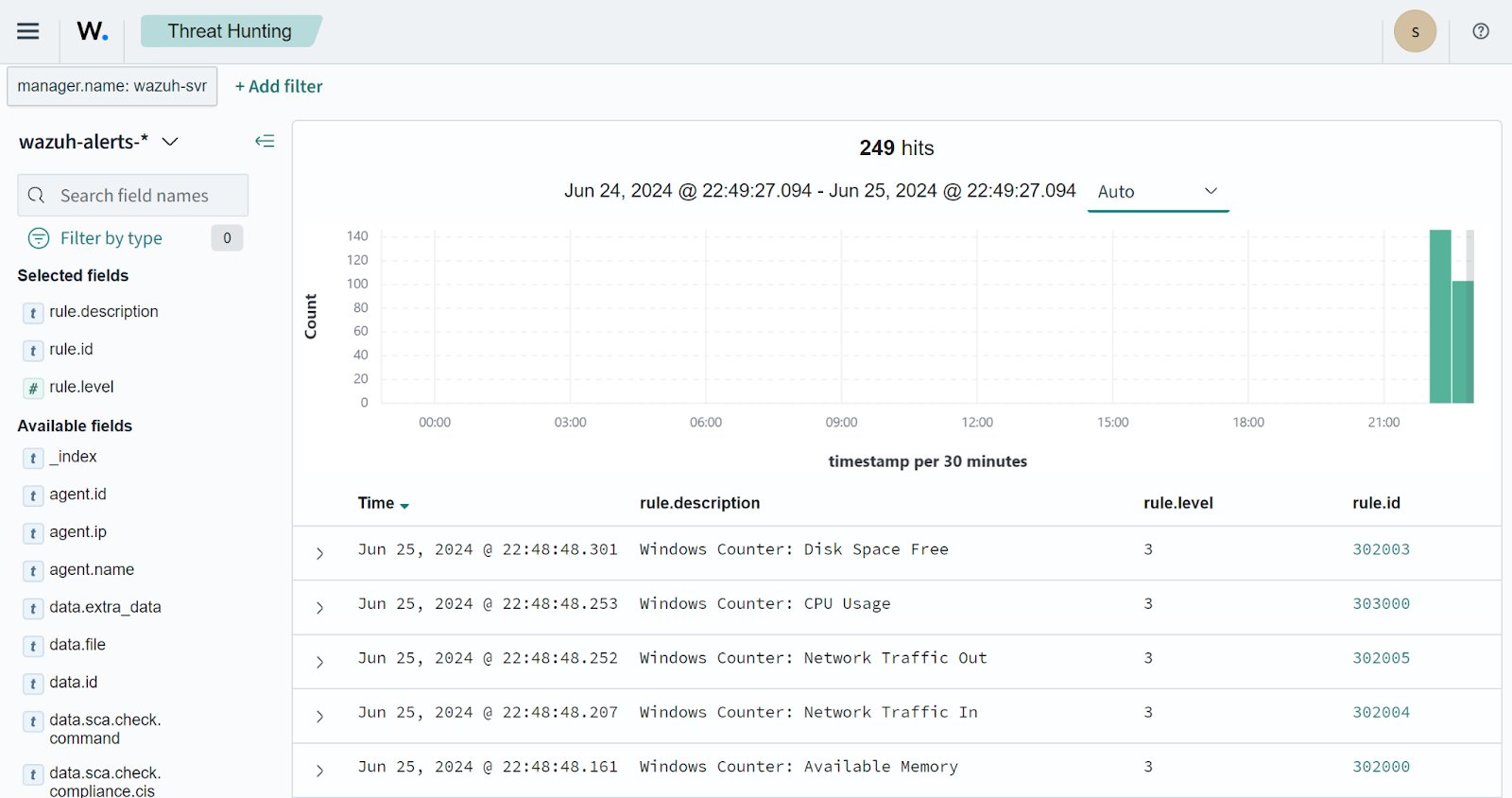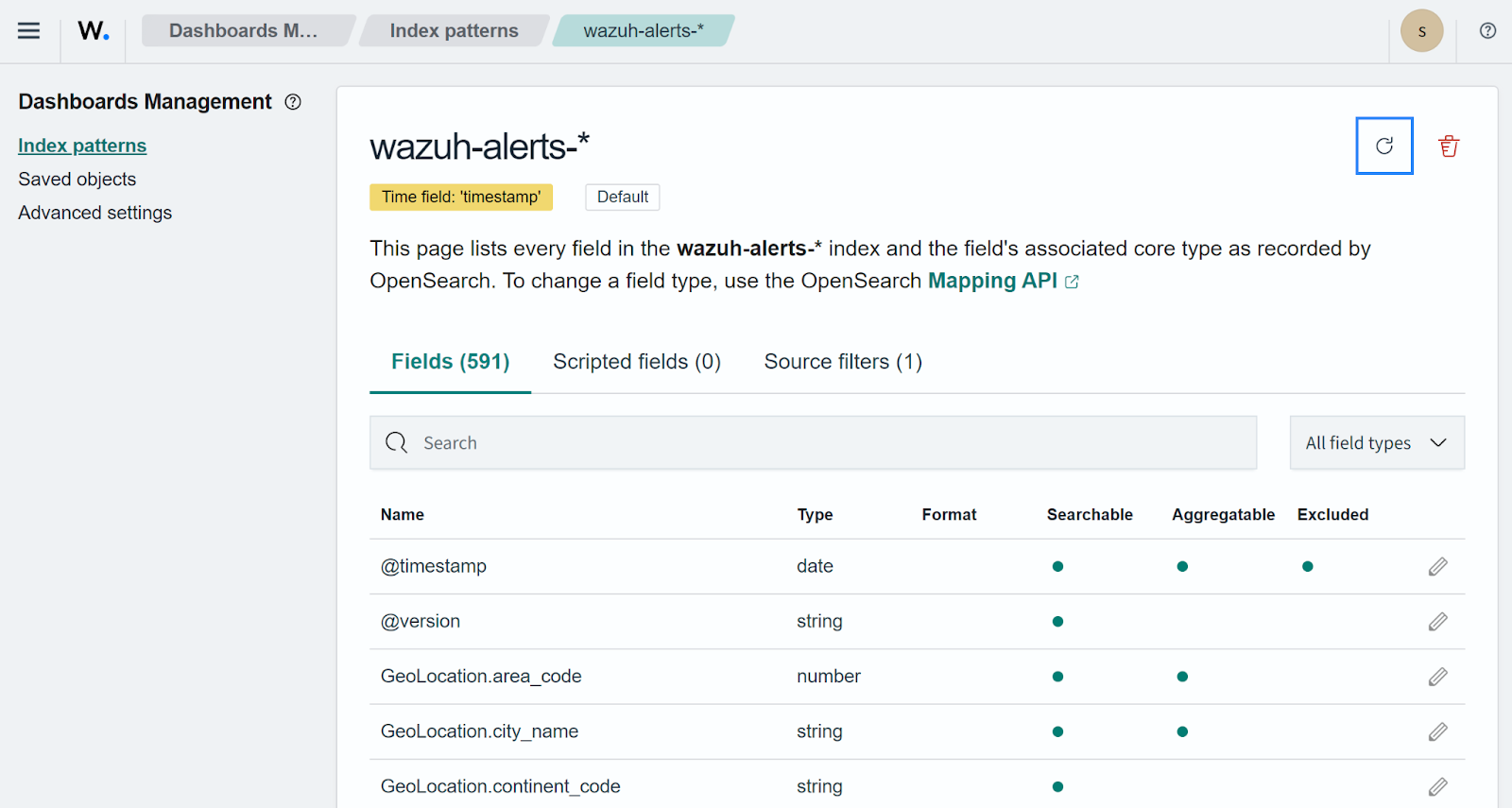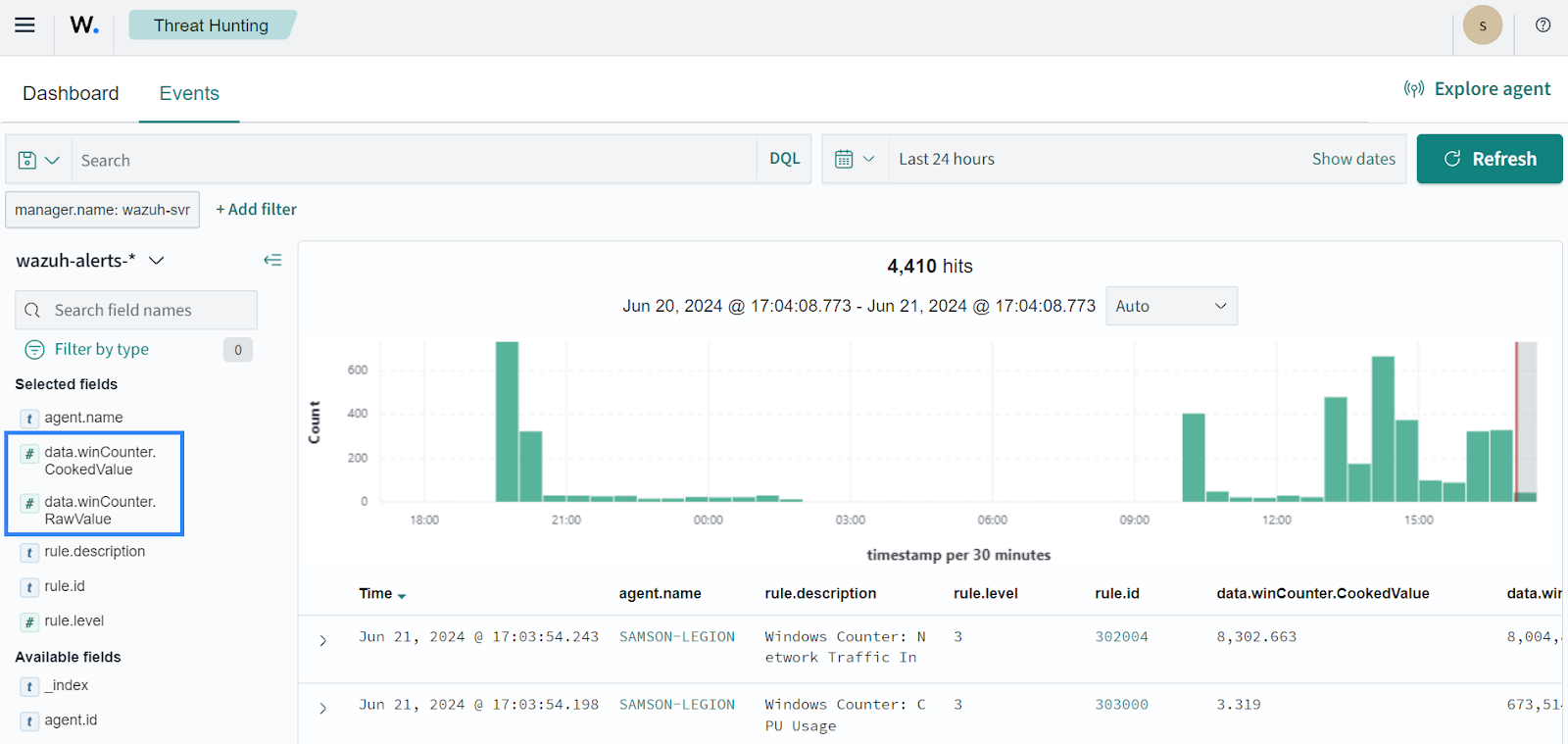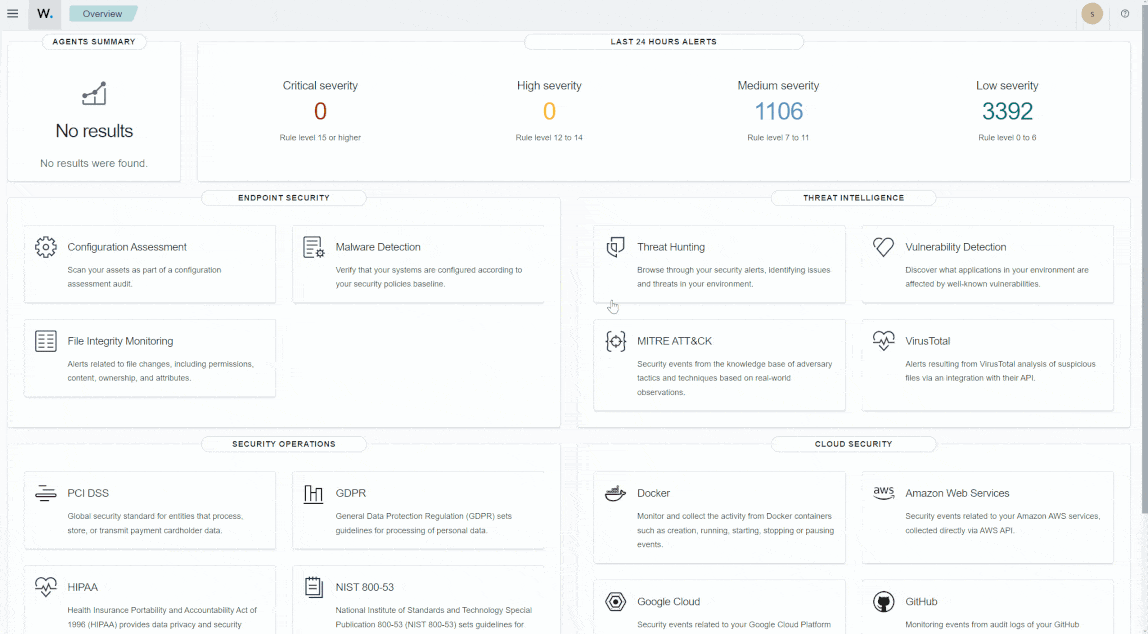Monitoring Windows resources with Performance Counters


Windows Performance Counter provides an in-depth and consistent interface for collecting different types of system data such as processor, memory, and disk usage statistics. Performance counters can be used to monitor system resources and performance. Windows performance counter data can be viewed in real time with the perfmon utility or alternatively, through the Powershell cmdlet called Get-Counter. The Get-Counter cmdlet gets performance counter data directly from the performance monitoring instrumentation on Windows endpoints. We will focus this blog post on the use of the Get-Counter cmdlet to obtain metrics from a Windows endpoint.
This blog post describes how to use Wazuh to monitor Windows system resources like CPU, RAM, disk, and network traffic. Observing resource usage contributes to the overall security monitoring of endpoints. This is because anomalies in the performance of system resources can be an indicator of ongoing attacks.
Counters are used to inspect the usage of Windows system resources. With the use of the Get-Counter cmdlet in a Powershell console, we can list all available counters:
Get-Counter -ListSet *
This will list a lot of counters, and the information is usually truncated because of its size.
To use this cmdlet, it is recommended to get a list of available counters for a counter set:
(Get-Counter -ListSet * | where {$_.CounterSetName -eq '<CounterSetName>'}).Paths
To list the counter in a counter set, use the CounterSetName variable:
Get-Counter -ListSet * | Select <CounterSetName>
For example, if we need to query the available counters for the Memory counter set, we can run this command:
(Get-Counter -ListSet * | where {$_.CounterSetName -eq 'Memory'}).Paths
We will get a list of counter paths like this:
\Memory\Page Faults/sec \Memory\Available Bytes \Memory\Committed Bytes \Memory\Commit Limit \Memory\Write Copies/sec \Memory\Transition Faults/sec \Memory\Cache Faults/sec \Memory\Demand Zero Faults/sec \Memory\Pages/sec \Memory\Pages Input/sec \Memory\Page Reads/sec \Memory\Pages Output/sec \Memory\Pool Paged Bytes \Memory\Pool Nonpaged Bytes \Memory\Page Writes/sec \Memory\Pool Paged Allocs \Memory\Pool Nonpaged Allocs \Memory\Free System Page Table Entries \Memory\Cache Bytes \Memory\Cache Bytes Peak \Memory\Pool Paged Resident Bytes \Memory\System Code Total Bytes \Memory\System Code Resident Bytes \Memory\System Driver Total Bytes \Memory\System Driver Resident Bytes \Memory\System Cache Resident Bytes \Memory\% Committed Bytes In Use \Memory\Available KBytes \Memory\Available MBytes \Memory\Transition Pages RePurposed/sec \Memory\Free & Zero Page List Bytes \Memory\Modified Page List Bytes \Memory\Standby Cache Reserve Bytes \Memory\Standby Cache Normal Priority Bytes \Memory\Standby Cache Core Bytes \Memory\Long-Term Average Standby Cache Lifetime (s)
These counter paths can be used to get the desired metrics.
Once we know which counter to query, we can run the Powershell cmdlet to obtain the information we want to measure. Each counter is uniquely identified through its name and its path (counter path), or location:
(Get-Counter '<CounterPath>').CounterSamples[0]
The result will be a Powershell object with some properties. For example:
Path InstanceName CookedValue ---- ------------ ----------- \win10-tools\processor(_total)\% processor time _total 3.14235688964537
We can configure the Wazuh command module to analyze performance metrics with this information.
Infrastructure
To demonstrate the monitoring of Windows resources using Wazuh, we set up the following infrastructure:
1. A pre-built ready-to-use Wazuh OVA 4.8.0. Follow this guide to download the virtual machine. This endpoint hosts the Wazuh central components (Wazuh server, Wazuh indexer, and Wazuh dashboard).
2. Windows 11 endpoint with Wazuh agent 4.8.0 installed and enrolled to the Wazuh server. To install the Wazuh agent, refer to the following installation guide.
Configuration
Using the Wazuh command module, we write wodle commands to run Get-Counter cmdlet on the Windows endpoint and analyze the results with the Wazuh server.
Take the following steps to configure the Wazuh command monitoring module on the Windows endpoint. The output of the Powershell commands are converted to JSON format using the ConvertTo-Json -compress flag. For example:
Powershell -c @{ winCounter = (Get-Counter ‘\Processor(*)\% Processor Time’).CounterSamples[0] } | ConvertTo-Json -compress
1. Edit the Wazuh agent /var/ossec/etc/ossec.conf file and add the following command monitoring configuration within the <ossec_config> block:
<!-- CPU Usage -->
<wodle name="command">
<disabled>no</disabled>
<tag>CPUUsage</tag>
<command>Powershell -c "@{ winCounter = (Get-Counter '\Processor(_Total)\% Processor Time').CounterSamples[0] } | ConvertTo-Json -compress"</command>
<interval>1m</interval>
<ignore_output>no</ignore_output>
<run_on_start>yes</run_on_start>
<timeout>0</timeout>
</wodle>
<!-- Memory Usage -->
<wodle name="command">
<disabled>no</disabled>
<tag>MEMUsage</tag>
<command>Powershell -c "@{ winCounter = (Get-Counter '\Memory\Available MBytes').CounterSamples[0] } | ConvertTo-Json -compress"</command>
<interval>1m</interval>
<ignore_output>no</ignore_output>
<run_on_start>yes</run_on_start>
<timeout>0</timeout>
</wodle>
<!-- Network Received -->
<wodle name="command">
<disabled>no</disabled>
<tag>NetworkTrafficIn</tag>
<command>Powershell -c "@{ winCounter = (Get-Counter '\Network Interface(*)\Bytes Received/sec').CounterSamples[0] } | ConvertTo-Json -compress"</command>
<interval>1m</interval>
<ignore_output>no</ignore_output>
<run_on_start>yes</run_on_start>
<timeout>0</timeout>
</wodle>
<!-- Network Sent -->
<wodle name="command">
<disabled>no</disabled>
<tag>NetworkTrafficOut</tag>
<command>Powershell -c "@{ winCounter = (Get-Counter '\Network Interface(*)\Bytes Sent/sec').CounterSamples[0] } | ConvertTo-Json -compress"</command>
<interval>1m</interval>
<ignore_output>no</ignore_output>
<run_on_start>yes</run_on_start>
<timeout>0</timeout>
</wodle>
<!-- Disk Free -->
<wodle name="command">
<disabled>no</disabled>
<tag>DiskFree</tag>
<command>Powershell -c "@{ winCounter = (Get-Counter '\LogicalDisk(*)\Free Megabytes').CounterSamples[0] } | ConvertTo-Json -compress"</command>
<interval>1m</interval>
<ignore_output>no</ignore_output>
<run_on_start>yes</run_on_start>
<timeout>0</timeout>
</wodle>
Note: You can use the centralized configuration to distribute this setting across multiple monitored endpoints. However, remote commands are disabled by default for security reasons and have to be explicitly enabled on each agent.
2. Restart the Wazuh agent to apply this change:
> NET START Wazuh
To generate an alert on the Wazuh dashboard, we need to create rules to match the generated logs.
1. Create rules to detect metrics in the logs from the command monitoring module. Add the rules to the custom rules file /var/ossec/etc/rules/windows_performance_monitor.xml on the Wazuh server:
<group name="WinCounter,">
<rule id="301000" level="0">
<decoded_as>json</decoded_as>
<match>^{"winCounter":</match>
<description>Windows Performance Counter: $(winCounter.Path)</description>
</rule>
<rule id="302000" level="3">
<if_sid>301000</if_sid>
<field name="winCounter.Path">memory\available mbytes</field>
<description>Windows Counter: Available Memory</description>
<group>MEMUsage,</group>
</rule>
<rule id="302001" level="5">
<if_sid>302000</if_sid>
<field name="winCounter.CookedValue" type="pcre2">^[5-9]\d\d$</field>
<description>Windows Counter: Available Memory less than 1GB</description>
<group>MEMUsage,</group>
</rule>
<rule id="302002" level="7">
<if_sid>302000</if_sid>
<field name="winCounter.CookedValue" type="pcre2">^[1-4]\d\d$</field>
<description>Windows Counter: Available Memory less than 500GB</description>
<group>MEMUsage,</group>
</rule>
<rule id="302003" level="3">
<if_sid>301000</if_sid>
<field name="winCounter.Path">free megabytes</field>
<description>Windows Counter: Disk Space Free</description>
<group>DiskFree,</group>
</rule>
<rule id="302004" level="3">
<if_sid>301000</if_sid>
<field name="winCounter.Path">bytes received/sec</field>
<description>Windows Counter: Network Traffic In</description>
<group>NetworkTrafficIn,</group>
</rule>
<rule id="302005" level="3">
<if_sid>301000</if_sid>
<field name="winCounter.Path">bytes sent/sec</field>
<description>Windows Counter: Network Traffic Out</description>
<group>NetworkTrafficOut,</group>
</rule>
<rule id="303000" level="3">
<if_sid>301000</if_sid>
<field name="winCounter.Path">processor\S+ processor time</field>
<description>Windows Counter: CPU Usage</description>
<group>CPUUsage,</group>
</rule>
<rule id="303001" level="5">
<if_sid>303000</if_sid>
<field name="winCounter.CookedValue">^8\d.\d+$</field>
<description>Windows Counter: CPU Usage above 80%</description>
<group>CPUUsage,</group>
</rule>
<rule id="303002" level="7">
<if_sid>303000</if_sid>
<field name="winCounter.CookedValue">^9\d.\d+$</field>
<description>Windows Counter CPU Usage above 90%</description>
<group>CPUUsage,</group>
</rule>
</group>
Where:
Rule ID 301000 is the base rule for detecting all the logs from the winCounter commands.Rule ID 302000 is triggered when a memory metric check is done.Rule ID 302001 is triggered when the memory utilized is less than 1GB.Rule ID 302002 is triggered when the memory available is less than 500GB.Rule ID 302003 is triggered when a disk metric check is done.Rule ID 302004 is triggered when the incoming network traffic is checked.Rule ID 302005 is triggered when the outgoing network traffic is checked.Rule ID 303000 is triggered when a CPU metric check is done.Rule ID 303001 is triggered when the CPU usage exceeds 80%.Rule ID 303002 is triggered when the CPU usage exceeds 90%.3. Restart the Wazuh manager to apply these changes:
$ sudo systemctl restart wazuh-manager
You will see relevant alerts on the Wazuh dashboard after restarting the Wazuh manager service:

We can further improve the viewing of existing metrics using custom dashboards, visualizations, and graphs. This presents a dynamic representation for monitoring system performance.
To use the alerts to create visualizations and dashboards, we need to set the data type of all custom fields to long. By default, the Wazuh indexer analyzes values from existing alerts as string data types. To change the default data type from string to long, do the following:
1. Add the custom fields in the Wazuh template. Find the data section in the /etc/filebeat/wazuh-template.json file, and add the highlighted custom fields to the data properties section:
{
"order": 0,
"index_patterns": [
"wazuh-alerts-4.x-*",
"wazuh-archives-4.x-*"
],
"settings": {
...
},
"mappings": {
"dynamic_templates": [
{
...
"data": {
"properties": {
"winCounter": {
"properties": {
"CookedValue": {
"type": "long"
},
"RawValue": {
"type": "long"
}
}
},
"audit": {
"properties": {
"acct": {
"type": "keyword"
...
2. To apply the changes to the Wazuh template, run the command below:
$ sudo filebeat setup -index-management
An expected output is shown below:
ILM policy and write alias loading not enabled. Index setup finished.
NOTE: Modifying existing fields is not permitted in Wazuh indexer. Once an index is created with some data fields, any changes to the existing fields on the live index are not allowed. Regardless, there is a walkaround; re-indexing.
Re-indexing data is the process of moving data from one index to another while transforming the data in the process. This is done when there are changes to the data structure or mappings that require re-organizing or updating the index.
1. Re-index your data. To use this technique, copy the data from the original index to a new index with updated schema definitions. Click on the upper-left menu icon and navigate to ☰ > Indexer management > Dev Tools to access the console. We use this console to run the necessary queries to re-index the existing data.
2. Check existing indices:
GET _cat/indices
The output below shows the names of the existing indices and corresponding creation dates:
green open wazuh-alerts-4.x-2024.04.24 TSj3p71XR5qTvwNR3JicwQ 3 0 3 0 53.5kb 53.5kb green open wazuh-alerts-4.x-2024.04.23 VjfArkNxSOK8-DBht8YnSg 3 0 480 0 1.1mb 1.1mb green open wazuh-alerts-4.x-2024.04.22 svIJ4pKvRk2fILuMNFCxtQ 1 0 0 0 208b 208b
3. Retrieve data about the index from the Wazuh indexer using a GET request. This confirms that the added custom fields are of the keyword type. In Wazuh, indices are created with the format wazuh-alerts-4.x-YYYY.MM.DD. Here, we will make use of the latest index wazuh-alerts-4.x-2024.01.24. Ensure you replace this index value with that of your latest index:
GET /wazuh-alerts-4.x-2024.04.24
An expected output is shown below:
...
"winCounter": {
"properties": {
"CookedValue": {
"type": "keyword"
},
"CounterType": {
"type": "keyword"
},
"DefaultScale": {
"type": "keyword"
},
"InstanceName": {
"type": "keyword"
},
"MultipleCount": {
"type": "keyword"
},
"Path": {
"type": "keyword"
},
"RawValue": {
"type": "keyword"
},
...
4. Extract the data from your latest source index to the new destination index named wazuh-alerts-4.x-backup with the re-index API. Replace the source index with your own latest index name value.
POST _reindex
{
"source": {
"index": "wazuh-alerts-4.x-2024.01.24"
},
"dest": {
"index": "wazuh-alerts-4.x-backup"
}
}
The new index with the new schema will be ready to use once the re-indexing is complete. Wazuh indexer returns a 200 – OK status code along with a JSON response that provides details about the operation. These details include the number of documents that were reindexed, the time it took to complete the operation, and any errors or warnings that occurred during the process.
5. Delete the old index. Replace the index name value with your own:
DELETE /wazuh-alerts-4.x-2024.01.24
6. Re-index the data from the backup index wazuh-alerts-4.x-backup to a new index with the original name wazuh-alerts-4.x-2023.04.24. This should be replaced with your own index name. This is done to apply our data type changes:
POST _reindex
{
"source": {
"index": "wazuh-alerts-4.x-backup"
},
"dest": {
"index": "wazuh-alerts-4.x-2024.01.24"
}
}
7. Delete the earlier created backup index:
DELETE /wazuh-alerts-4.x-backup
8. Verify the string data type for the custom fields has changed to the double data type in the updated index. Ensure you replace this index value with that of your own index:
GET /wazuh-alerts-4.x-2024.01.24
An expected output is shown below:
...
"winCounter": {
"properties": {
"CookedValue": {
"type": "long"
},
"CounterType": {
"type": "keyword"
},
"DefaultScale": {
"type": "keyword"
},
"InstanceName": {
"type": "keyword"
},
"MultipleCount": {
"type": "keyword"
},
"Path": {
"type": "keyword"
},
"RawValue": {
"type": "long"
},
...
9. Refresh the field list by navigating to ☰ > Dashboard management > Dashboards Management > Index Patterns > wazuh-alerts-* and clicking the refresh button on that index pattern page.

10. Verify the updated fields are now in the number format by navigating to the Wazuh > Threat Hunting > Events.

Click the upper-left menu icon and navigate to ☰ > Explore > Visualize > Create new visualization.
We use the line visualization format and wazuh-alerts-* as the index pattern name. This will create a data tab where the required filters are specified. The Wazuh dashboard visualization builder contains two aggregation objects; metric and bucket aggregation as shown above:
Both the Y-axis and the X-axis are used to plot the data points on a visualization chart. Follow the instructions below to create individual visualizations for this blog post.
a. Select the line visualization format on the Visualize tab, and use wazuh-alerts-* as the index pattern name.
b. Set the following values on Y-axis, in Metrics:
Aggregation = MaxField = data.winCounter.CookedValueCustom label = CPU usagec. Add an X-axis in Buckets and set the following values:
Aggregation = Date HistogramField = timestampMinimum interval = Minuted. Click on Add filter by the top left of the dashboard, and set the following values:
Field = rule.idOperator = isValue = 303000e. Click the Update button.
f. Click the upper-right Save button and assign a title to save the visualization.
a. Select the line visualization format on the Visualize tab, and use wazuh-alerts-* as the index pattern name.
b. Set the following values on the Y-axis, in Metrics:
Aggregation = MaxField = data.winCounter.CookedValueCustom label = Memory Availablec. Add an X-axis in Buckets and set the following values:
Aggregation = Date HistogramField = timestampMinimum interval = Minuted. On the top left of the dashboard, click on Add filter and set the following values:
Field = rule.idOperator = isValue = 302000e. Click the Update button.
f. Click the upper-right Save button and assign a title to save the visualization.
a. Select the metric visualization format on the Visualize tab, and use wazuh-alerts-* as the index pattern name.
b. Set the following values on the Y-axis, in Metrics:
Aggregation = MaxField = data.winCounter.CookedValueCustom label = Disk Freec. On the top left of the dashboard, click on Add filter and set the following values:
Field = rule.idOperator = isValue = 302003d. Click the Update button.
e. Click the upper-right Save button and assign a title to save the visualization.
a. Select the line visualization format on the Visualize tab, and use wazuh-alerts-* as the index pattern name.
b. Set the following values on the Y-axis, in Metrics:
Aggregation = MaxField = data.winCounter.CookedValueCustom label = Network Inboundc. Add an X-axis in Buckets and set the following values:
Aggregation = Date HistogramField = timestampMinimum interval = Minuted. Click on Add filter by the top left of the dashboard, and set the following values:
Field = rule.idOperator = isValue = 302004e. Click the Update button.
f. Click the upper-right Save button and assign a title to save the visualization.
a. Select the line visualization format on the Visualize tab, and use wazuh-alerts-* as the index pattern name.
b. Set the following values on the Y-axis, in Metrics:
Aggregation = MaxField = data.winCounter.CookedValueCustom label = Network Outboundc. Add an X-axis in Buckets and set the following values:
Aggregation = Date HistogramField = timestampMinimum interval = Minuted. Click on Add filter by the top left of the dashboard, and set the following values:
Field = rule.idOperator = isValue = 302005e. Click the Update button.
f. Click the upper-right Save button and assign a title to save the visualization.
Once this is applied, we can build custom visualizations and dashboards with those values.
1. Click on the upper-left menu icon and navigate to ☰ > Explore > Dashboards > Create new dashboard.
2. Click Add an existing and select the earlier created visualizations to populate the dashboard.
3. Save the dashboard by selecting the save option on the top-right navigation bar.
The GIF below shows a sample dashboard containing the newly created visualizations.

Conclusion
This guide details how Wazuh can be used to monitor Windows system resources like CPU, RAM, etc. Observing resource usage contributes to the overall security monitoring of endpoints.
If you have any questions or require assistance regarding this setup, refer to our community channels.
References